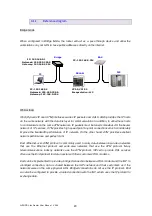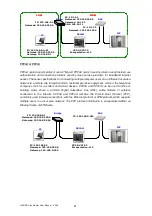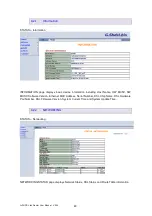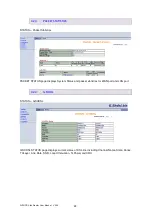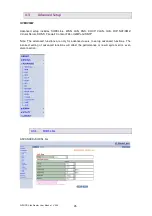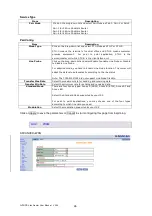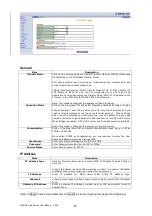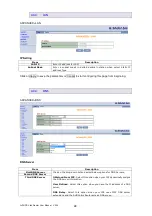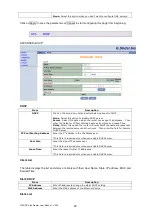
G.SHDSL .bis Router User Manual V0.04
20
4
4
.
.
1
1
.
.
1
1
R
R
e
e
f
f
e
e
r
r
e
e
n
n
c
c
e
e
d
d
i
i
a
a
g
g
r
r
a
a
m
m
Bridge mode
When configured in Bridge Mode
,
the router will act as a pass-through device and allow the
workstations on your LAN to have public addresses directly on the internet
.
PC
IP: 192.168.0.2
Netmask: 255.255.255.0
Gateway: 192.168.0.254
VPI:0, VCI:32
Encapsulation: LLC
DSLAM
ISP
Bridge
BAS
IP: 192.168.0.1
Netmask: 255.255.255.0
Gateway: 192.168.0.254
IP: 192.168.0.254
IPoA or EoA
IPoA (Dynamic IP over ATM) interfaces carries IP packets over AAL5. AAL5 provides the IP hosts
on the same network with the data link layer for communications. In addition, to allow these hosts
to communicate on the same ATM networks, IP packets must be tuned somewhat. AS the bearer
network of IP services, ATM provides high speed point-to-point connections which considerably
improve the bandwidth performance of IP network. On the other hand, ATM provides excellent
network performance and perfect QoS.
EoA (Ethernet-over-ATM) protocol is commonly used to carry data between local area networks
that use the Ethernet protocol and wide-area networks that use the ATM protocol. Many
telecommunications industry networks use the ATM protocol. ISPs who provide DSL services
often use the EoA protocol for data transfer with their customers' DSL modems.
EoA can be implemented to provide a bridged connection between a DSL modem and the ISP. In
a bridged connection, data is shared between the ISP's network and their customer's as if the
networks were on the same physical LAN. Bridged connections do not use the IP protocol. EoA
can also be configured to provide a routed connection with the ISP, which uses the IP protocol to
exchange data.















